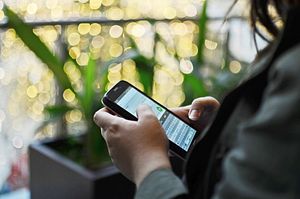By Vidhu Pandey
Among its many effects, the COVID-19 lockdown has also been a dampener on India’s conventional education system. All educational institutions have been closed for almost three months now. While private schools are getting creative and teaching through conference calls, students in government schools are being left behind. It took a pandemic for the Indian government to realize that its approach to education needs a huge technology boost.
Take for instance the government of the state of Chhattisgarh in India’s center-east. It launched the Padhai Tuhar Dwar (Education at Your Doorstep) portal. School teachers and their students can register on the portal through their mobile numbers and some basic information. It allows teachers to conduct online classes and upload study material. But the sudden digitization has not been an easy leap for all.
“We have no smartphones or computers at home so I used our neighbor’s phone to register on the portal,” Dolly, a Class 10 student in a government school in the state’s Raigarh district, said. “But I haven’t been able to attend any online classes because I cannot keep borrowing their phone to log in.”
More than 2 million students have registered on the portal, according to official data. But that doesn’t really reflect the truth on the ground.
A teacher from Chhattisgarh’s Jashpur district, who did not want to be named, revealed, “Class teachers have to make sure that every student in their class is registered on the portal. But most students either do not have access to a smartphone or have poor internet connectivity. We could not even reach a lot of students on their registered phone numbers.”
Then she admitted, “There is so much pressure to show numbers. We had to register students on our own in order to meet the target. We have shared the ID and password with the students we were able to reach. Now it is up to them to get active on the portal.”
Over 180,000 teachers registered on the portal. But only 557 online classes have been conducted for students from Class 1 to 12. The teachers are now forced to run a digital classroom with no training whatsoever, not to mention the obstacles due to an unreliable power supply.
“The portal should be converted into a user-friendly co-interactive app,” Gayatri Devta, a primary school teacher from Jashpur, suggested. “Because at this stage, interaction with each other while learning is crucial. That notwithstanding, it doesn’t help that the teachers are struggling to use the portal on their own.”
“The government should have started introducing technology much before the pandemic,” said Isha Mishra, who is on a fellowship to help develop leadership at government schools of Mumbai. “The system desperately needs it. Digitization is a part of education itself. It is important for effective learning. But for it to work, we must break the resistance within teachers as well. After spending years in a conventional classroom, they need training, regular follow up and timely technical assistance.”
Students from more developed districts like Gariaband have uploaded about 4,000 assignments. But there has been zero engagement from the students of districts like Narayanpur, which is not only remote in location, but is also Maoist rebel-affected. The backward regions of the state have more government schools than private ones. So consider what it means to have zero engagement from over 5,000 registered schools.
Robust connectivity is the lifeline of online education. The state government has boasted about the portal being free but has not addressed concerns over poor connectivity. In some districts like Kawardha and Bastar, a steady 2G network is still a distant dream.
The story finds resonance in the northern state of Uttar Pradesh, where the government has come out with a plan for learning through technology. But it’s the same even here. Teachers are facing challenges due to poor connectivity in remote locations.
According to the latest report by the Indian government’s National Sample Survey Office, less than one-fourth of households have access to the internet, and the number is reduced to a little more than one-tenth when it comes to households with students.
The pandemic was dubbed a great equalizer. But as always, those without the privilege of smartphones and high-speed (or any kind of) internet are suffering. To be able to afford education at a low cost is naturally a priority for everyone.
For now, it remains a dream for some.

No comments:
Post a Comment